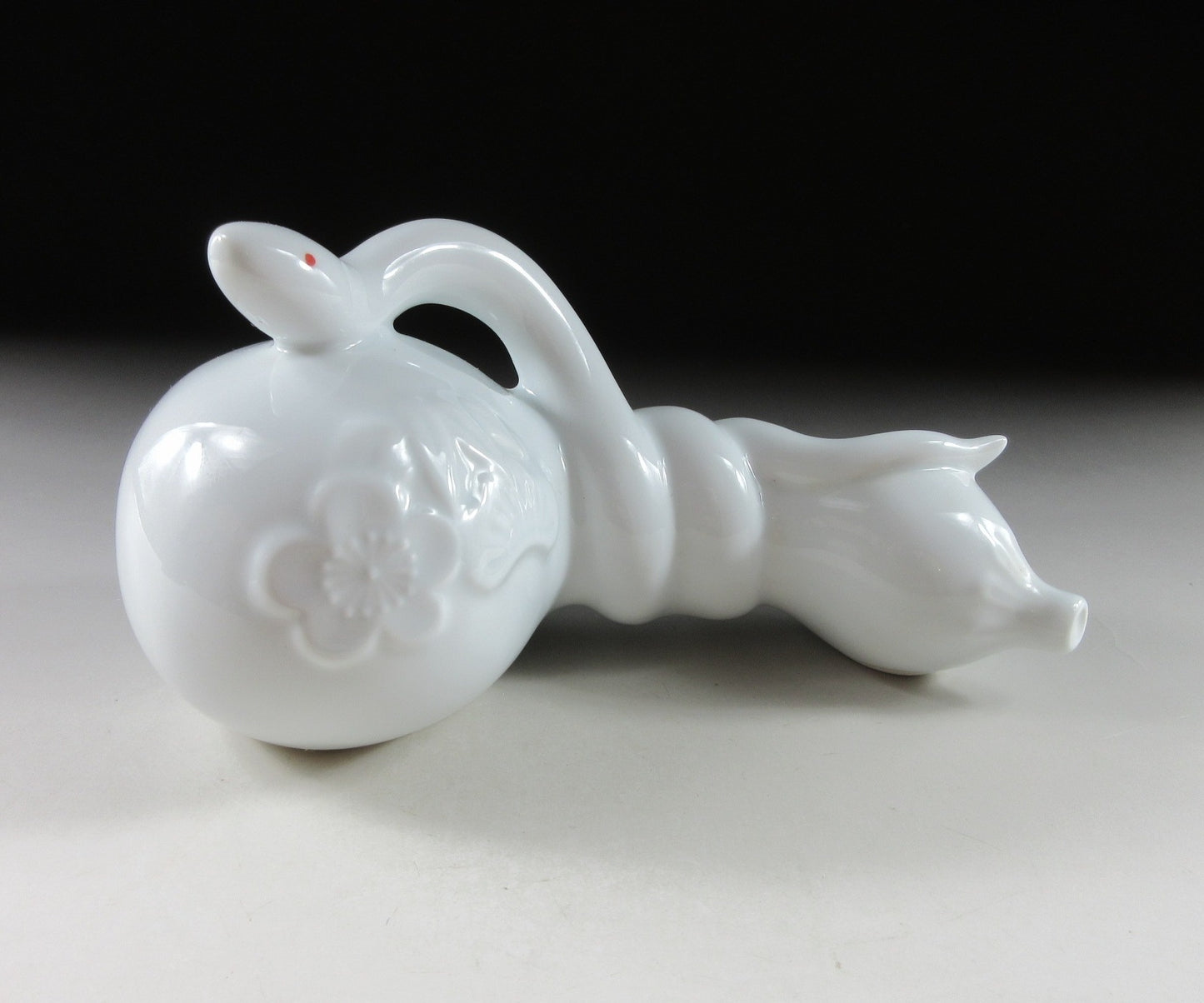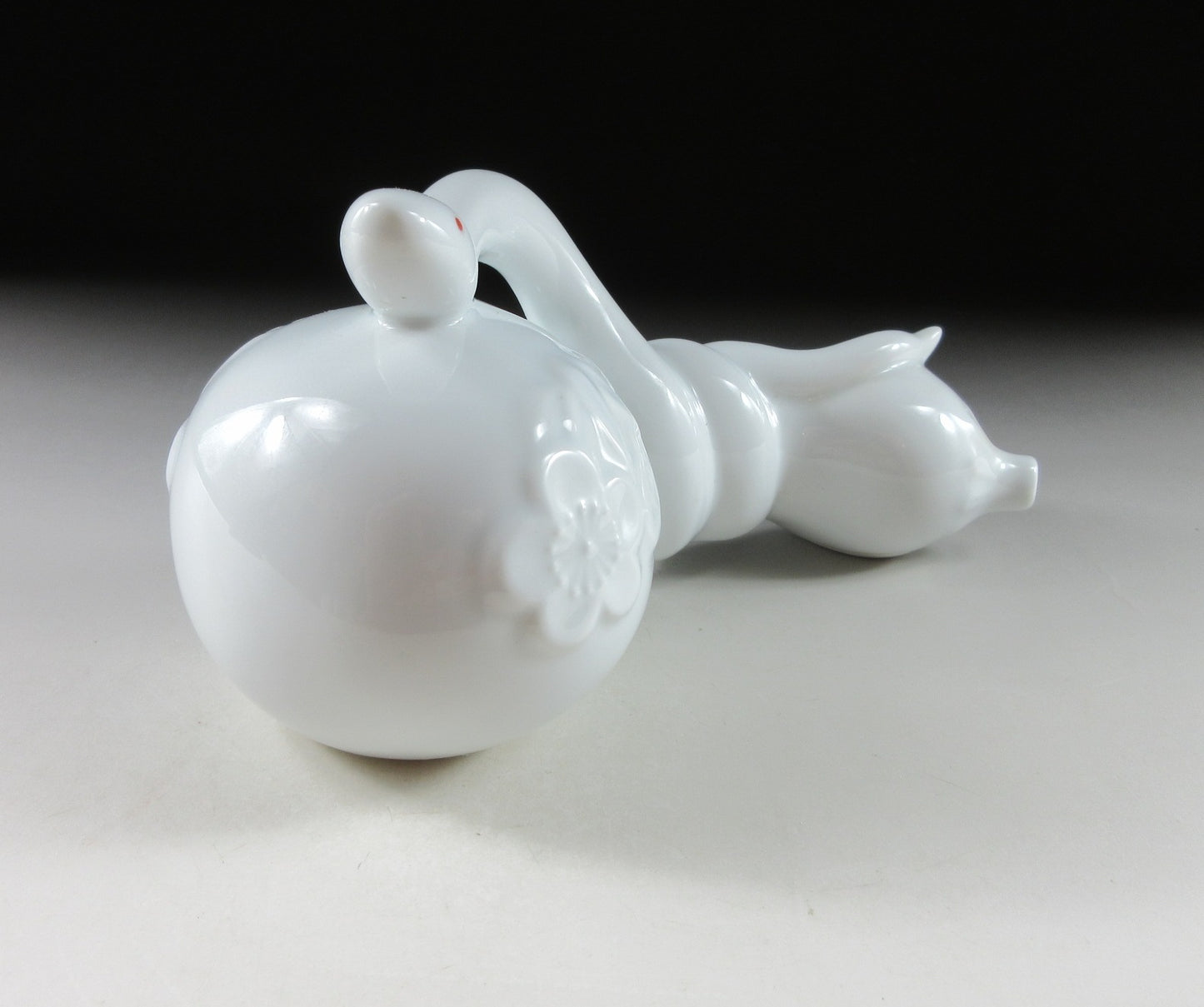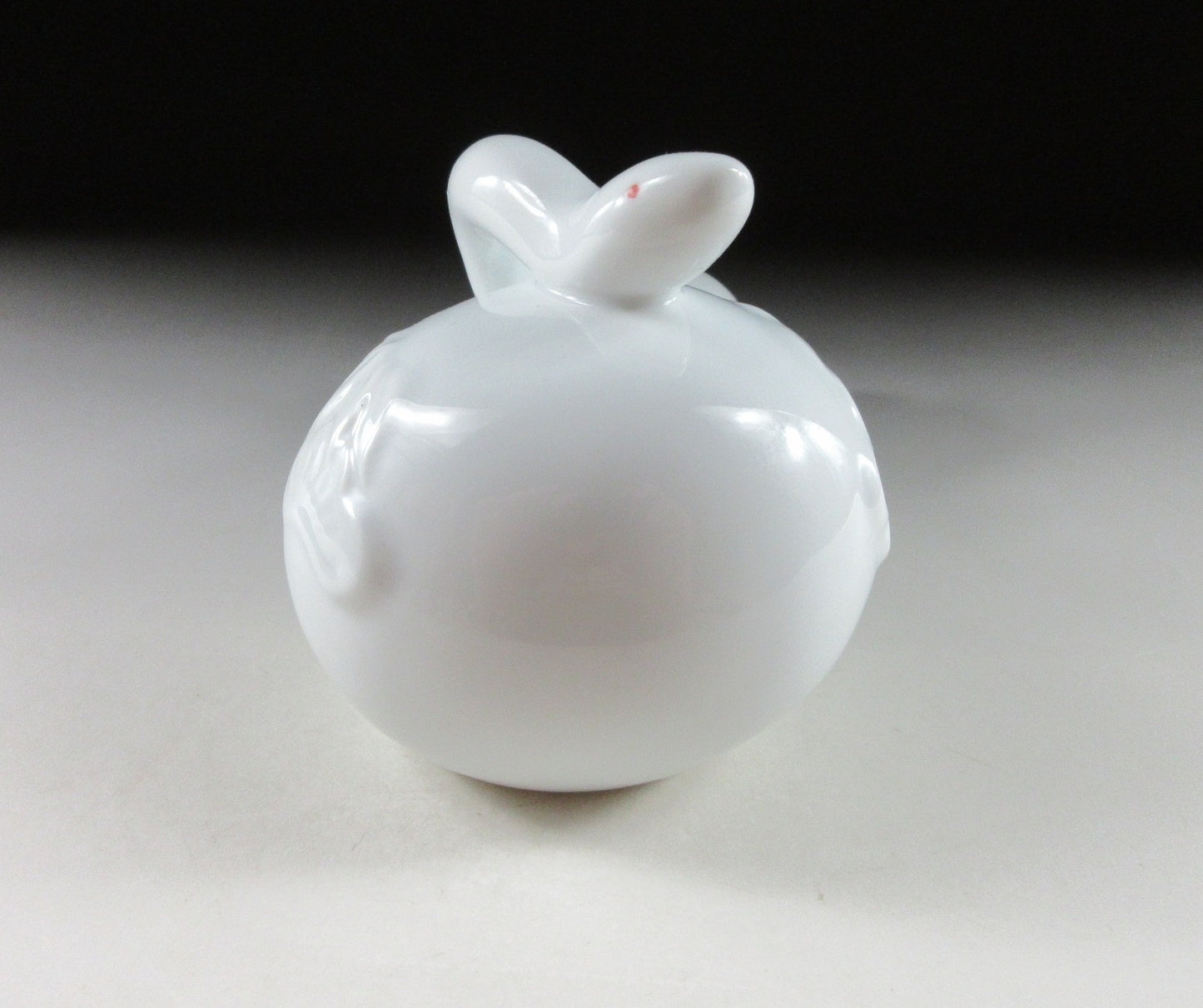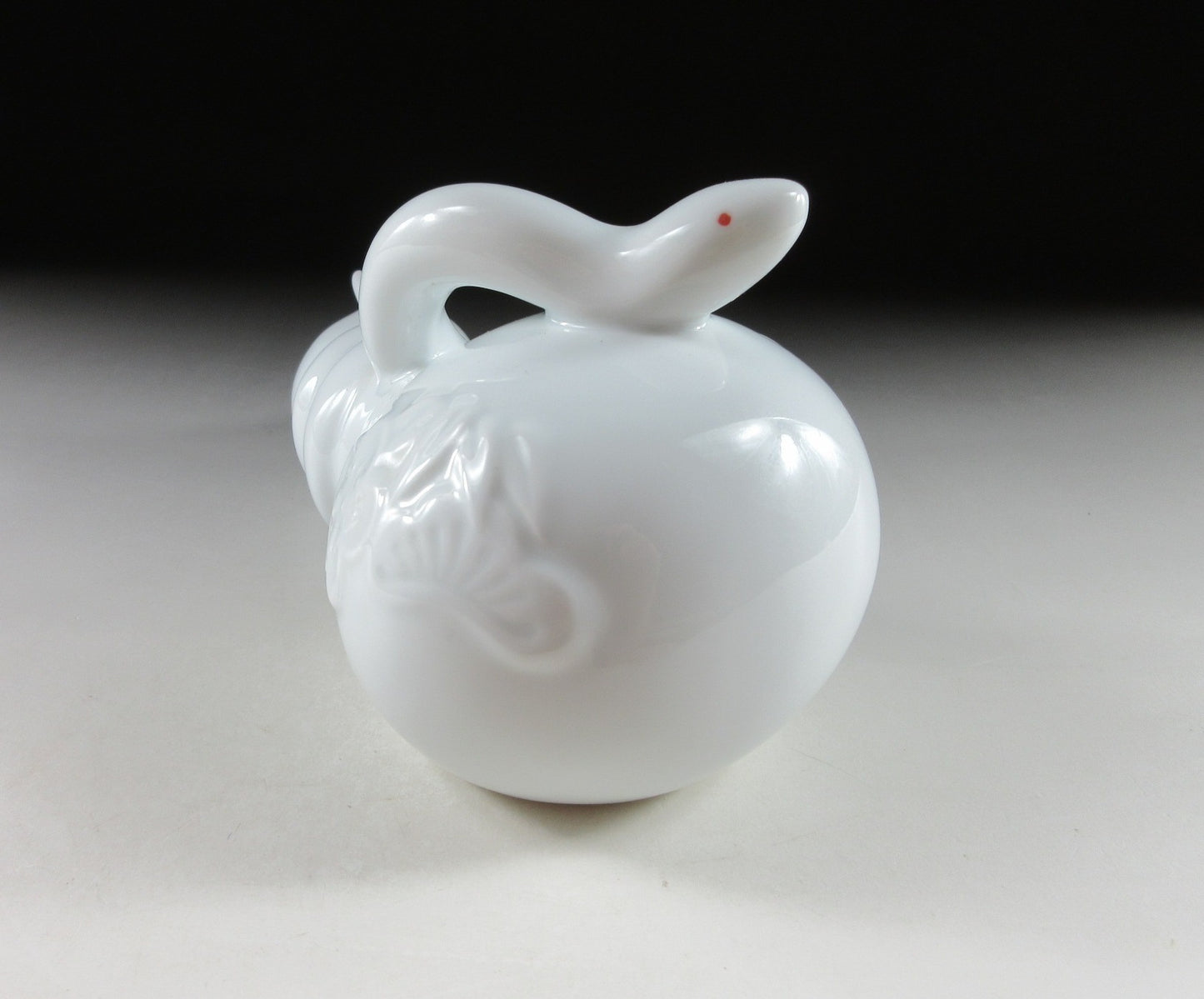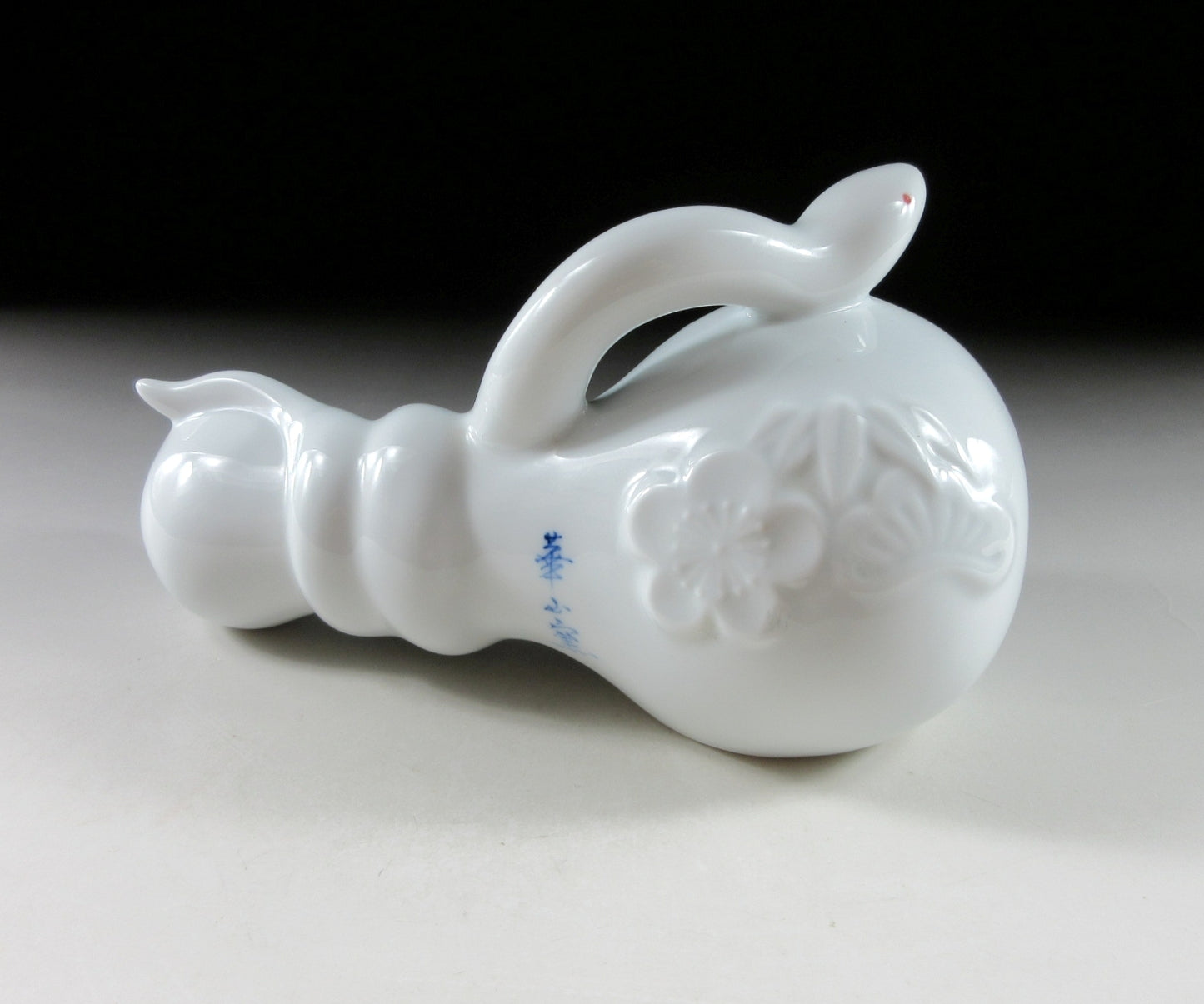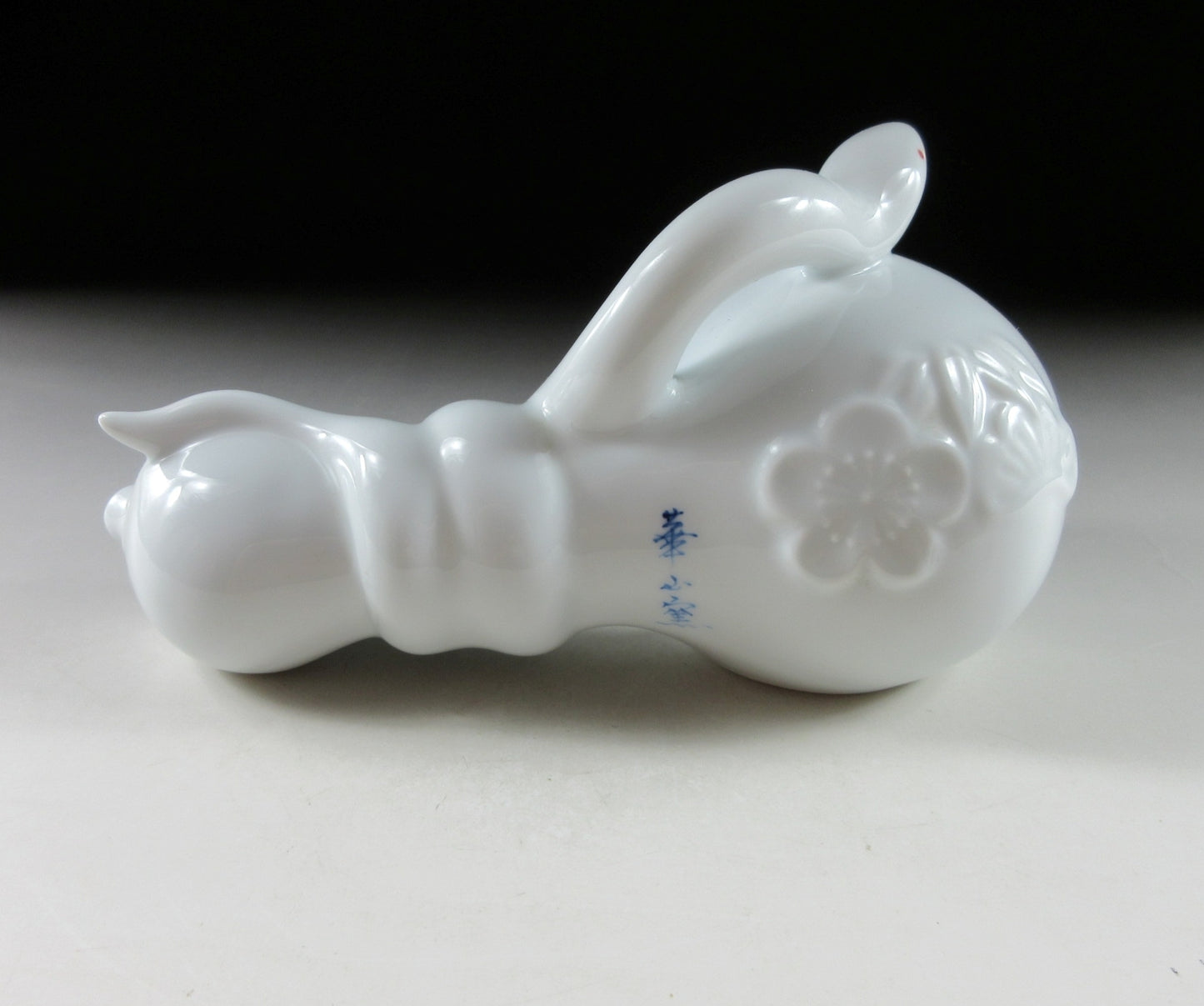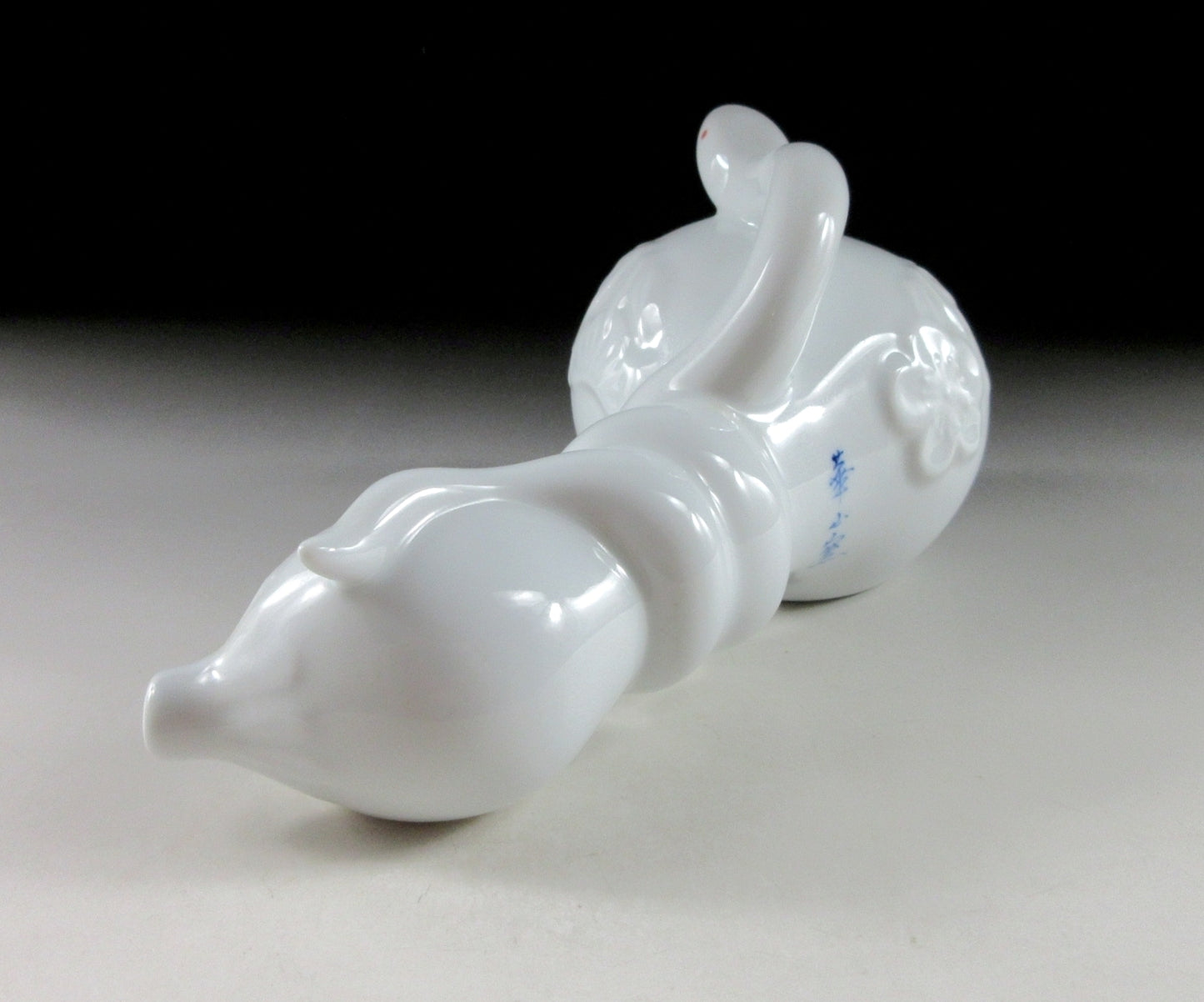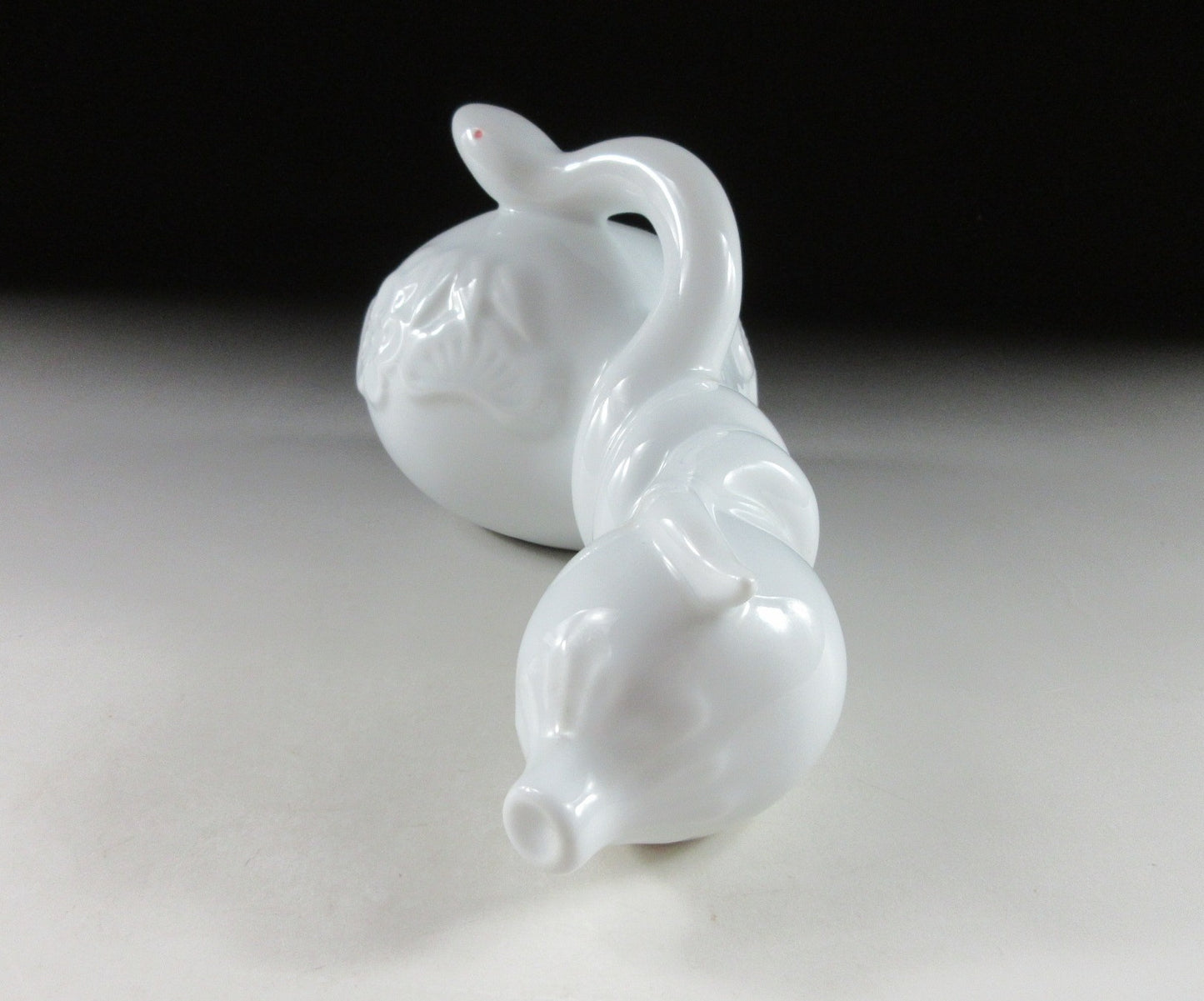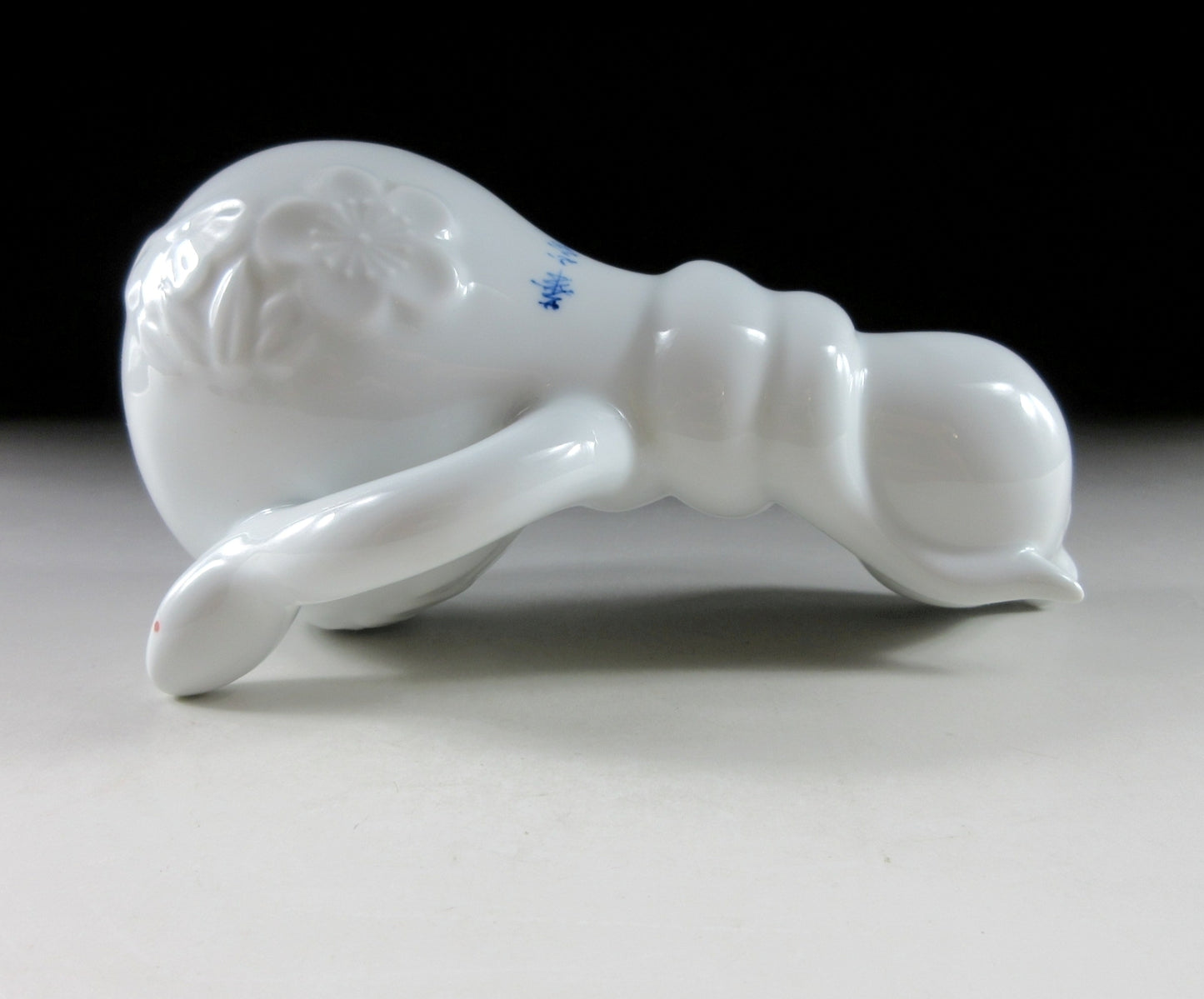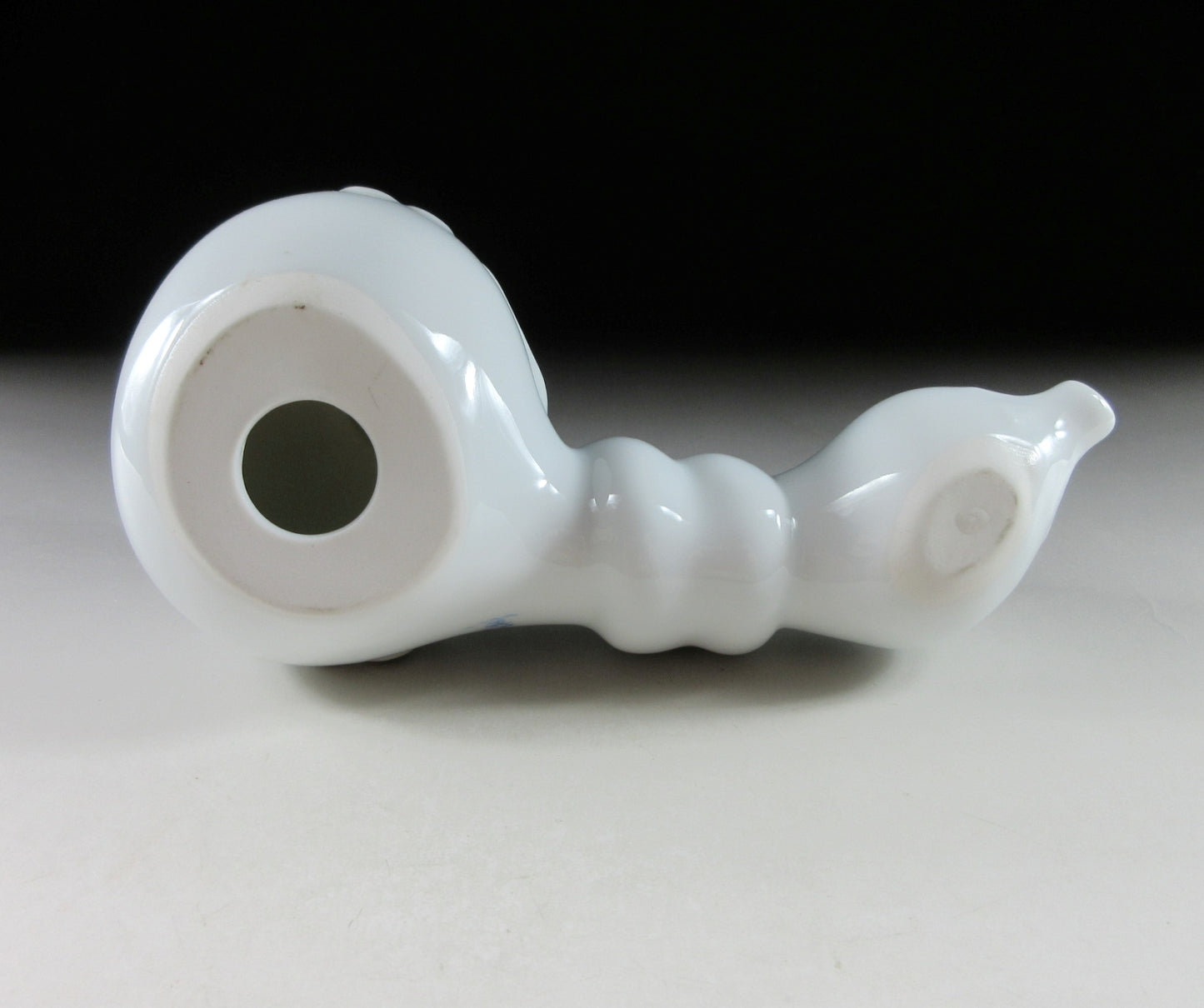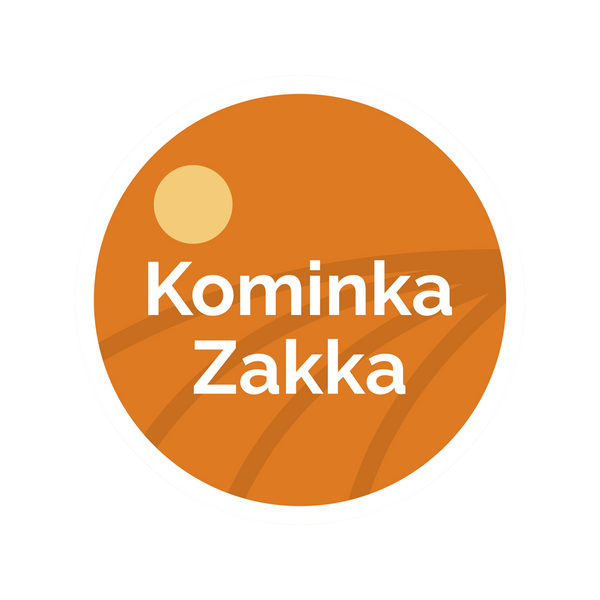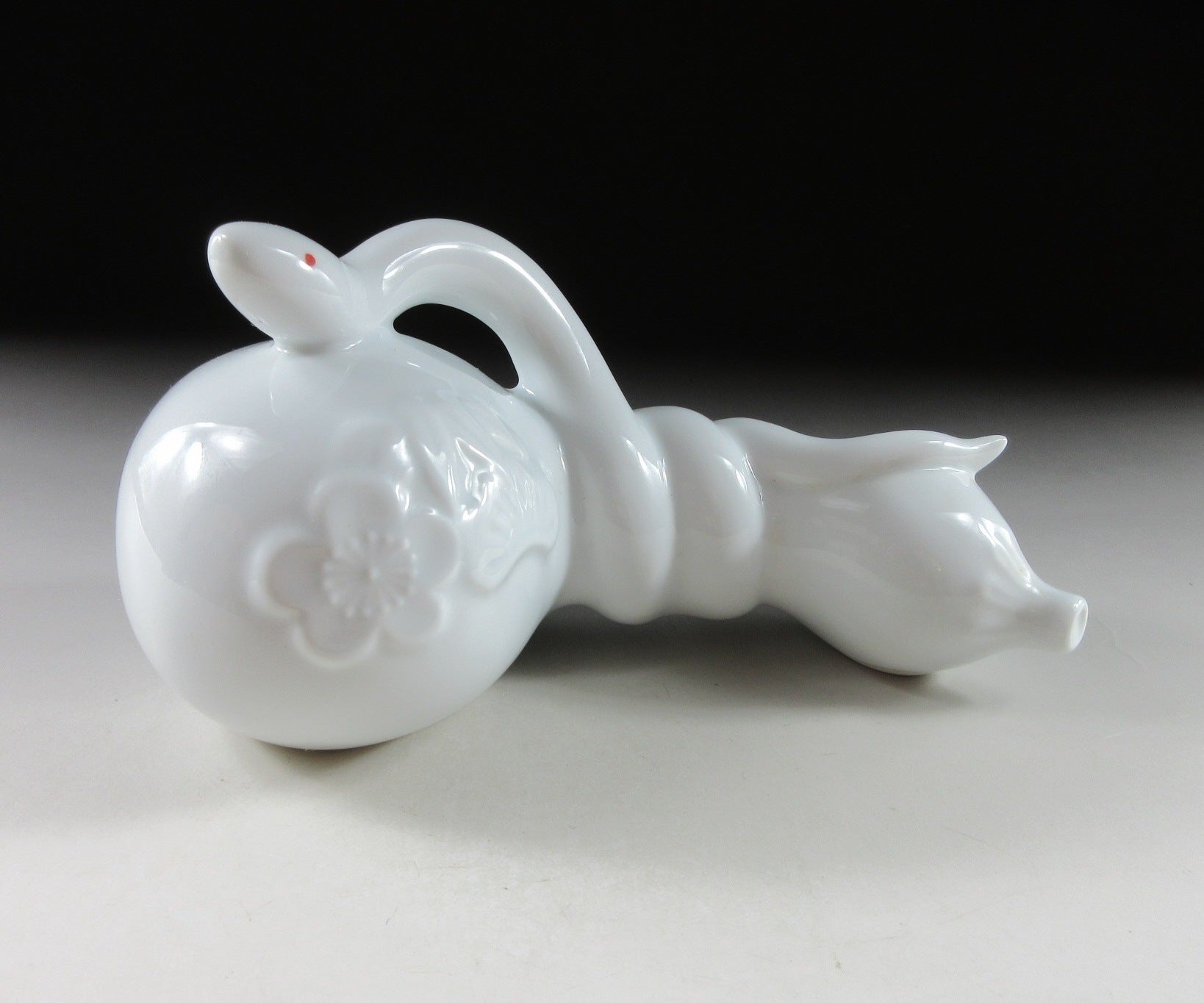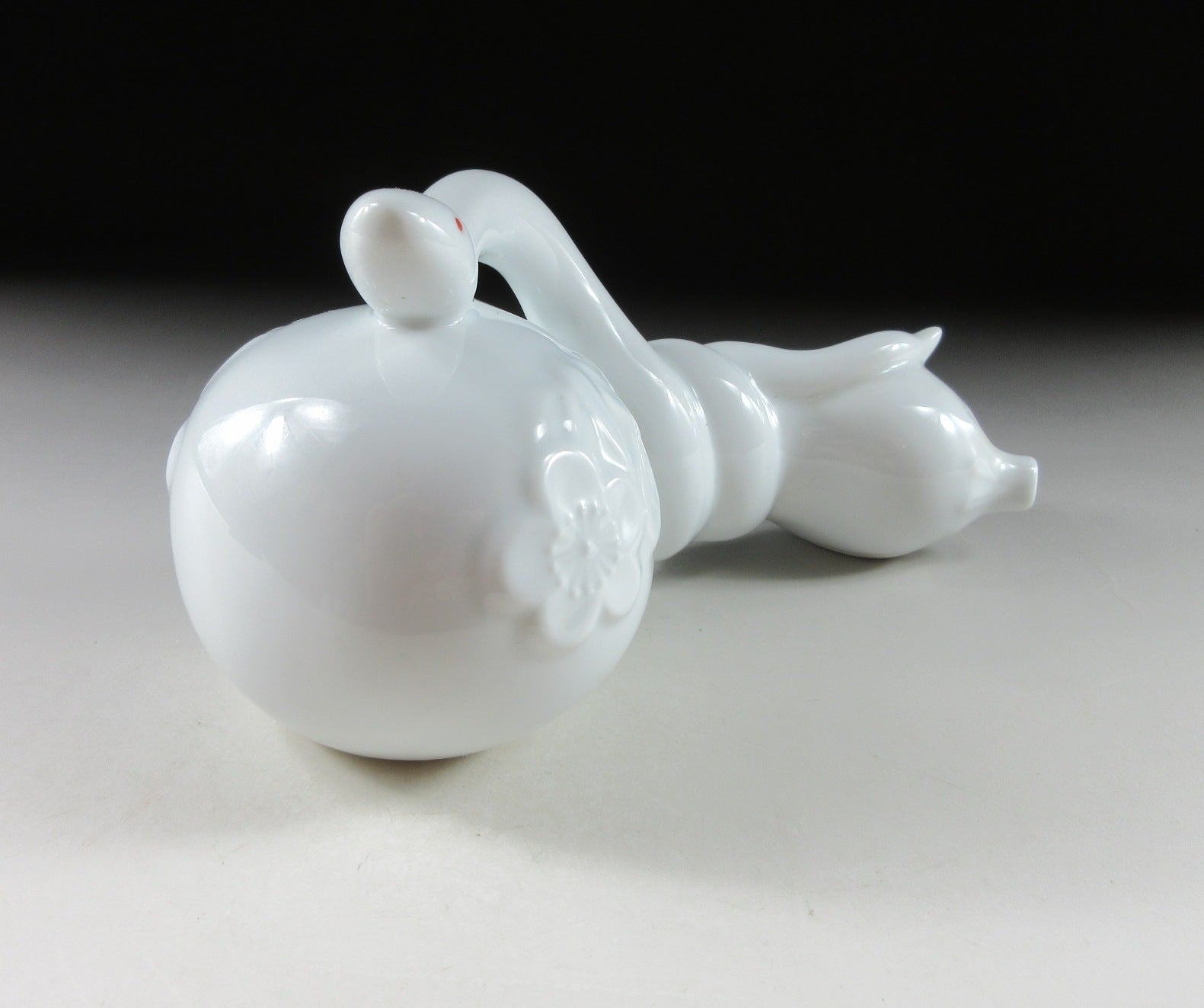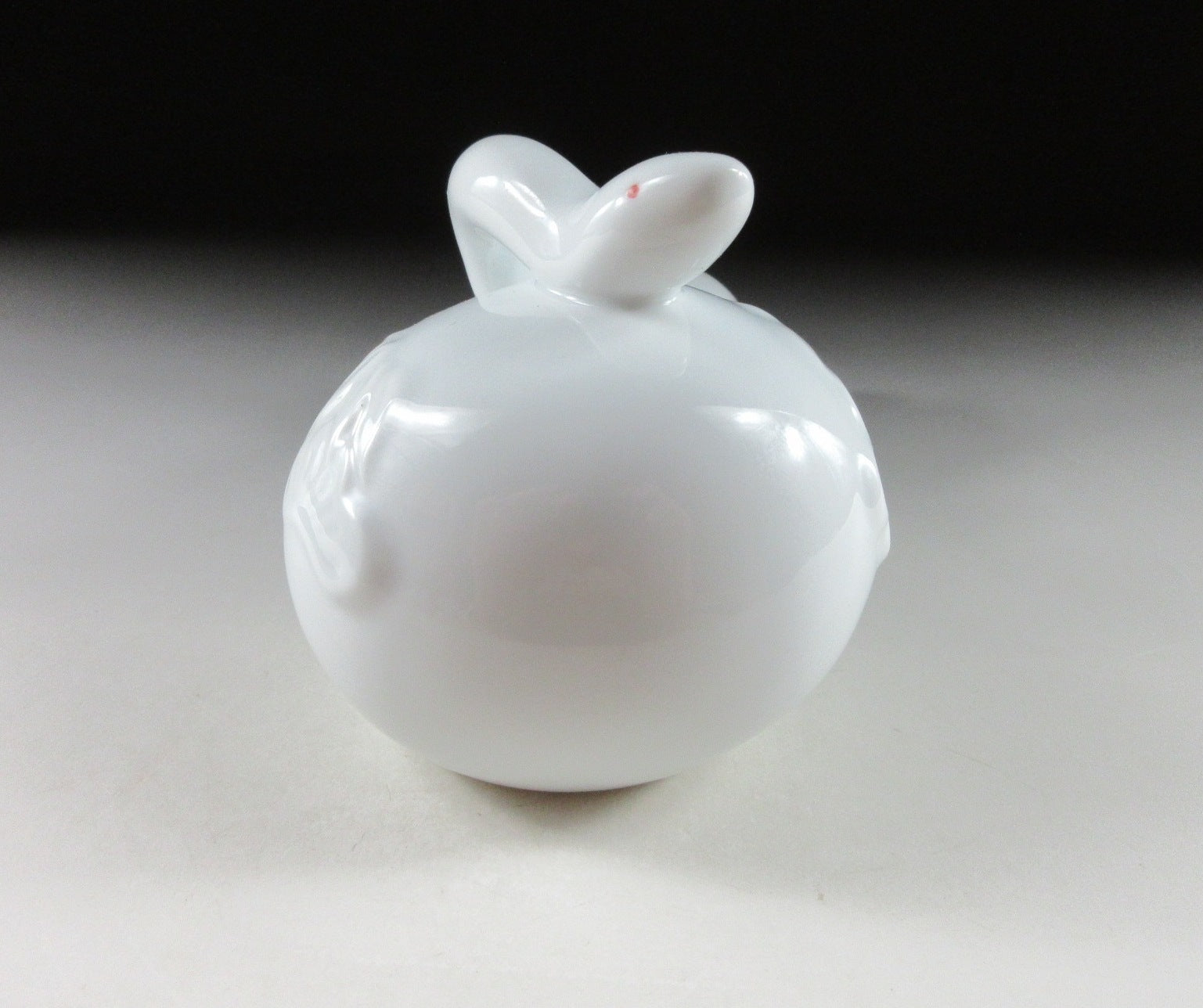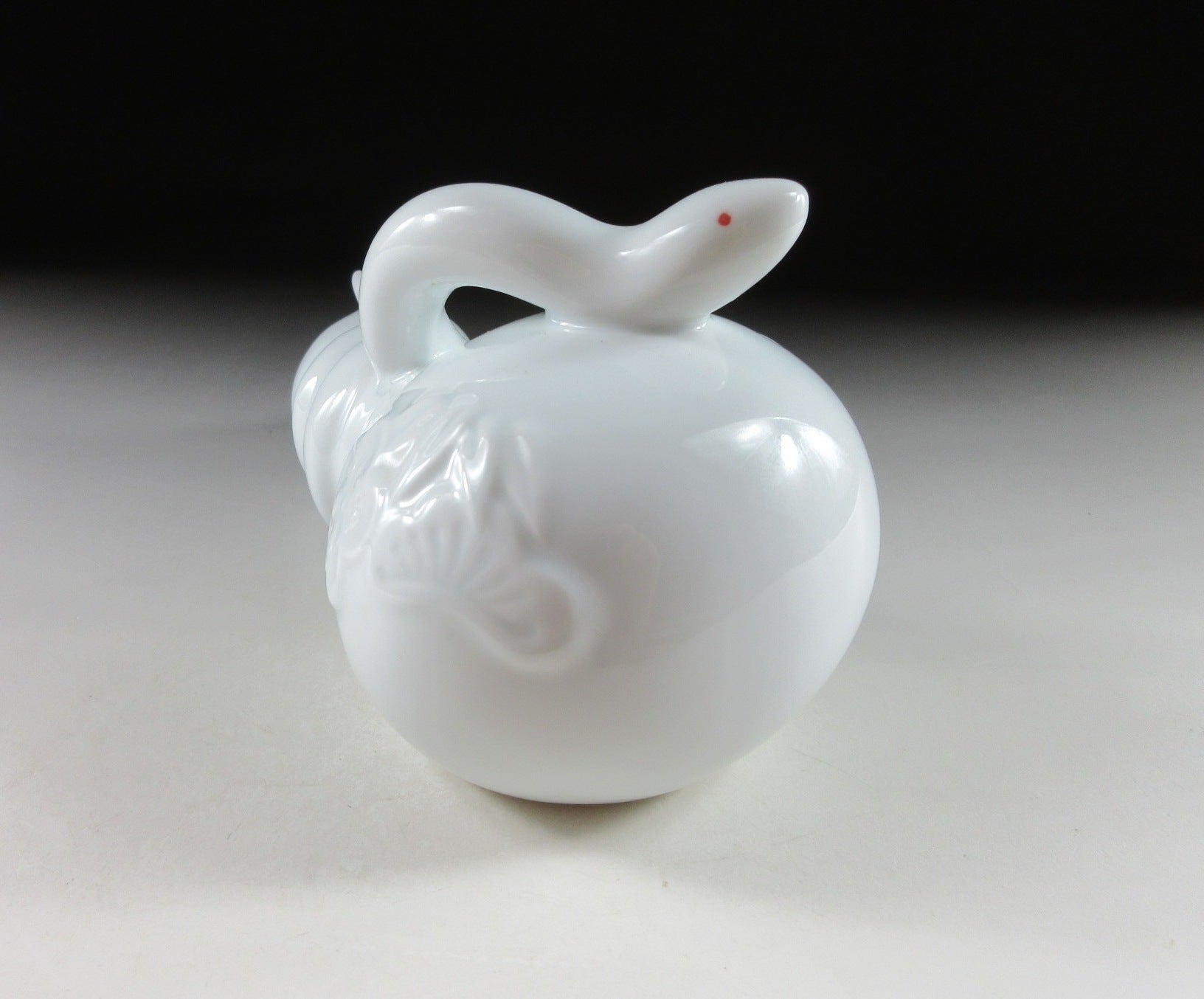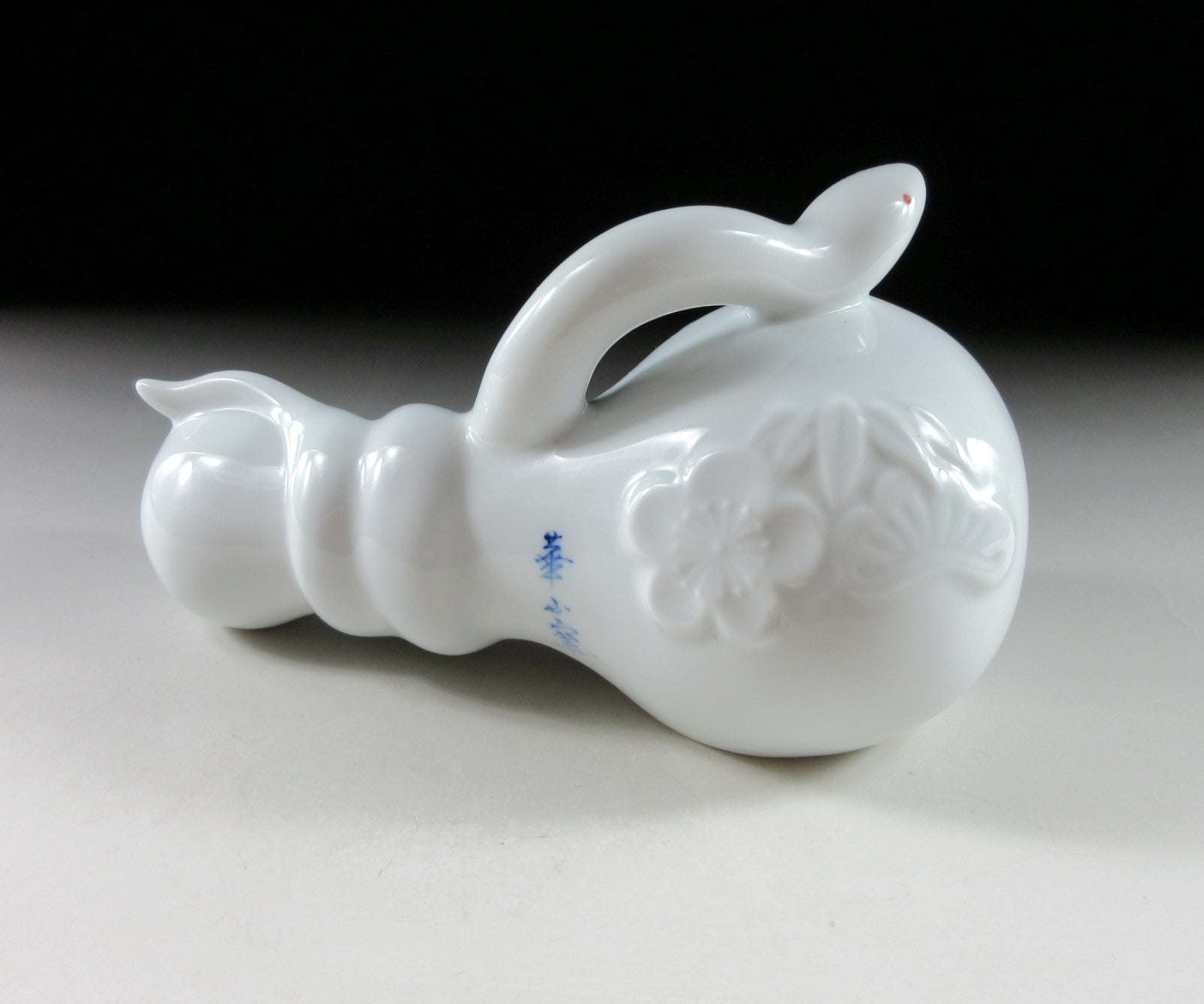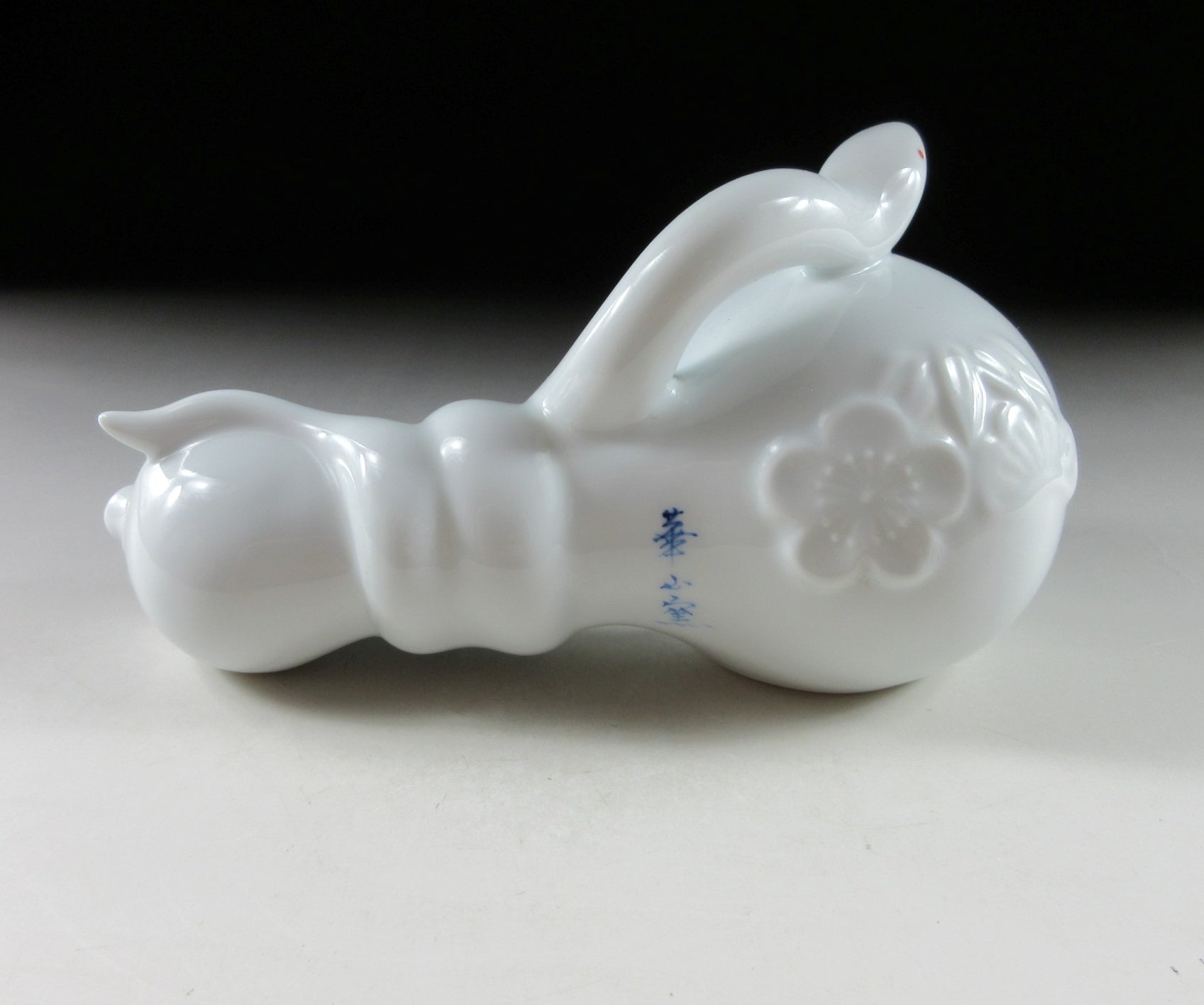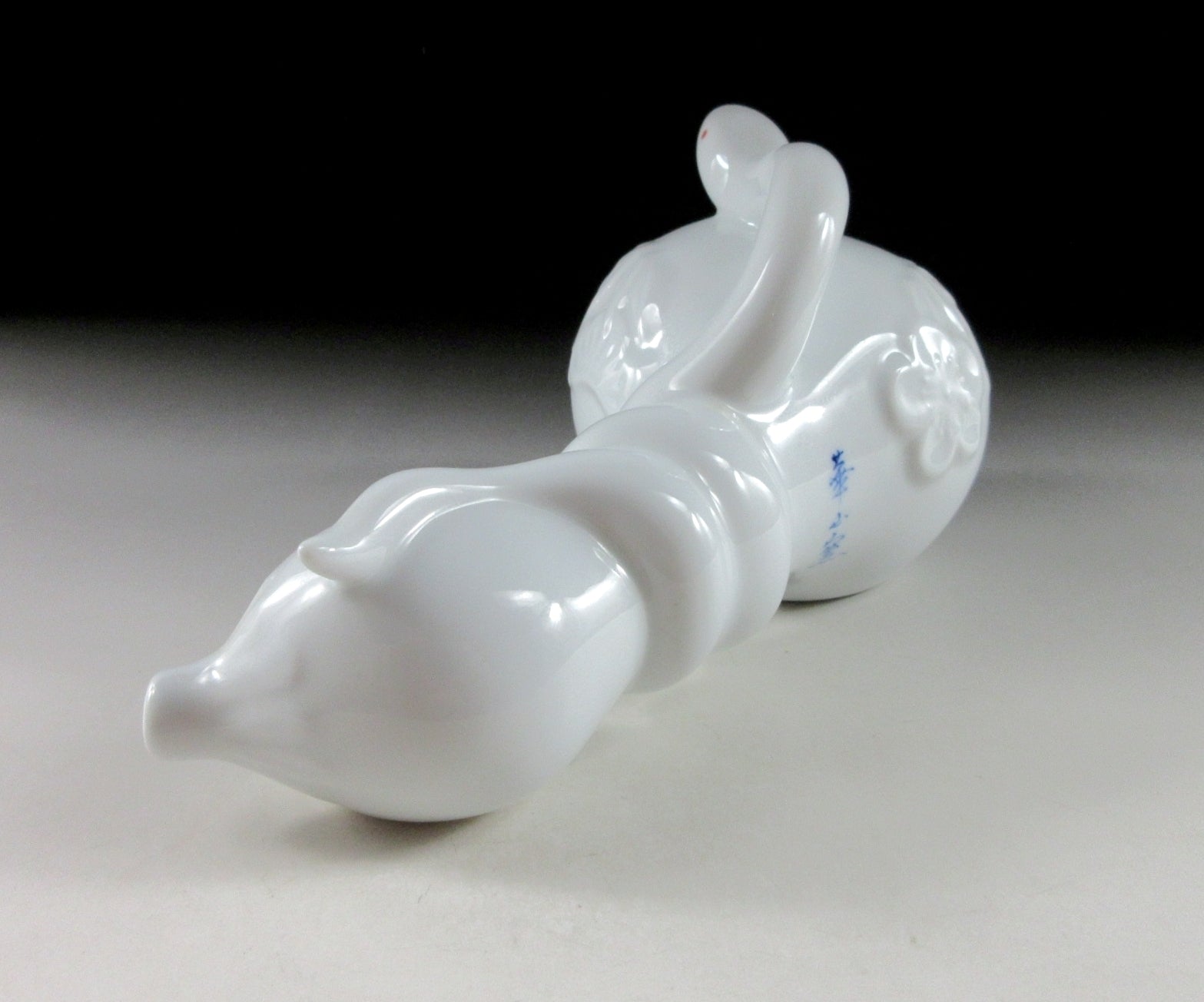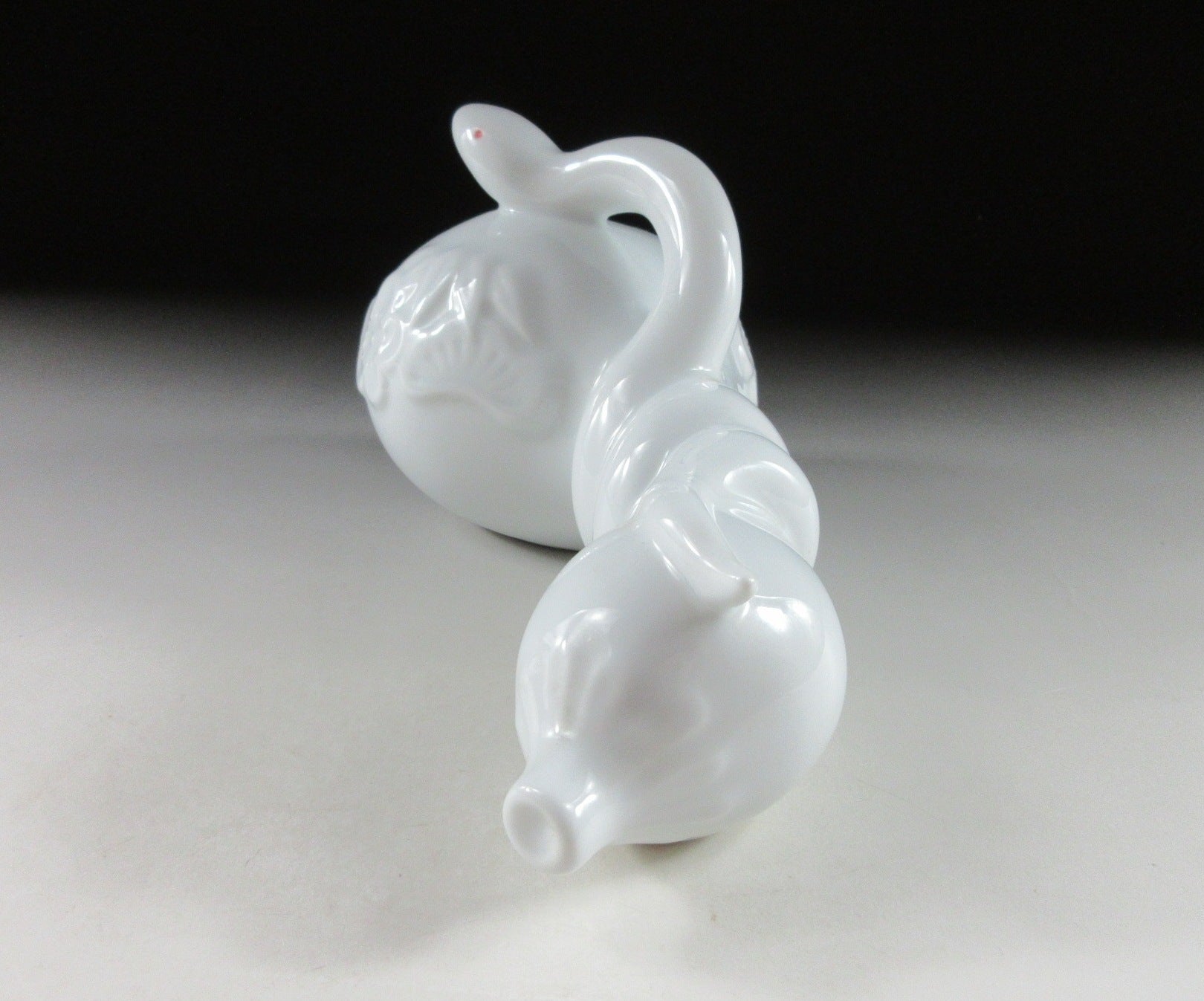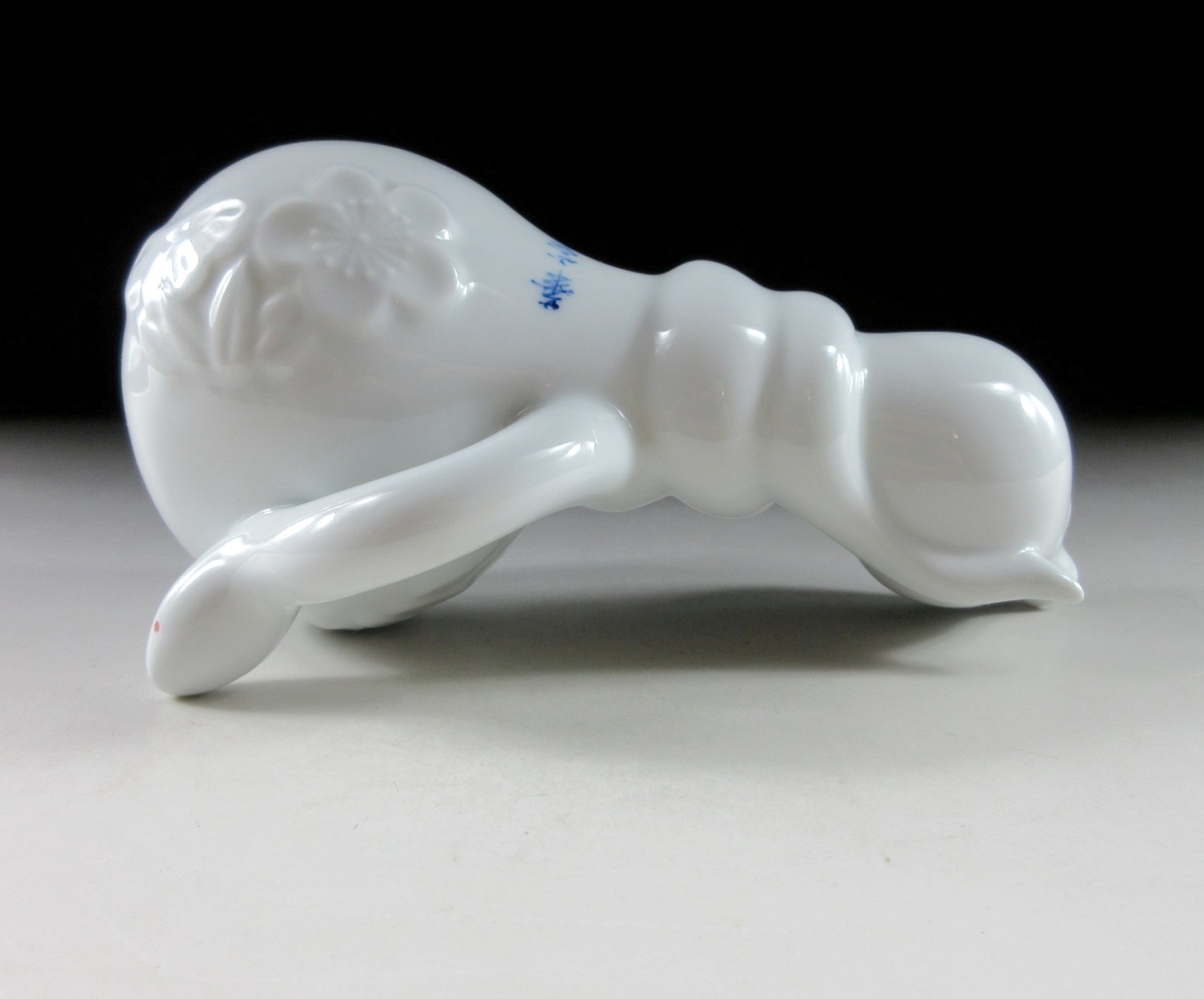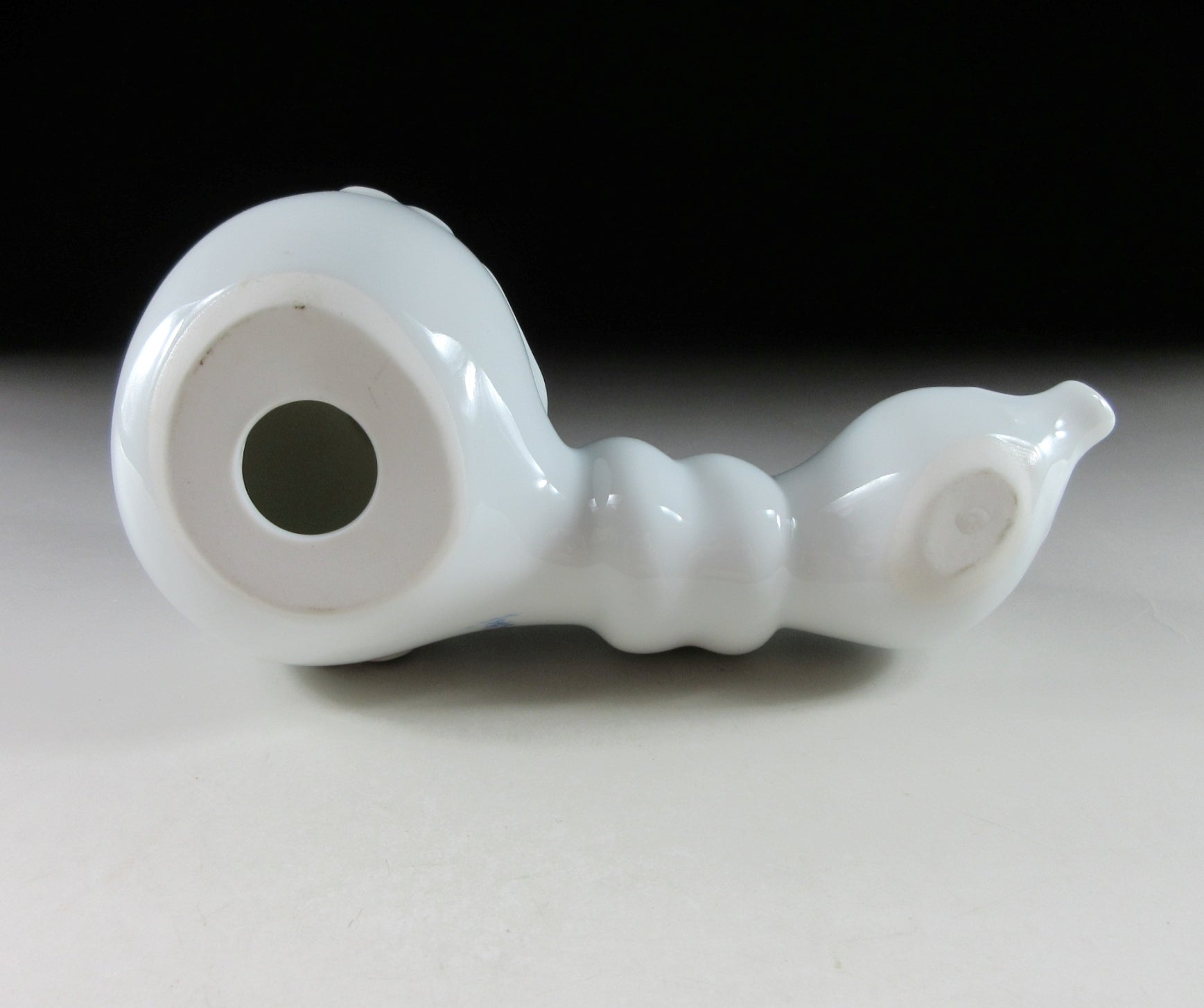Kominka Zakka
Kazan Gama Year of the Snake Okimono
Kazan Gama Year of the Snake Okimono
Couldn't load pickup availability
*SHIPPING OPTIONS VARY DEPENDING ON THE DESTINATION, PLEASE SCROLL TO THE END OF THIS LISTING FOR MORE DETAILS.
This listing is for an Arita-ware snake okimono made 36 years ago by Kazan Gama. It is made from a slip mould and coated in glossy hakuji glaze. This piece features a snake wrapped around a gourd, and the gourd is decorated with ume blossoms. This piece was most likely made to commemorate the Year of the Snake back in 1989. The signature of the kiln can be found on the snake’s belly, sorry no box for this one.
Kazan Gama is an Arita-ware kiln with a history spanning some 220years. It was established in 1796 as an official kiln serving the Nabeshima Domain, and at that time produced large ceramic wares. From 1887 to 1890, they created and donated large ceramic lanterns to Sumiyoshi Taisha Shrine in Osaka, Kitano Tenmangu Shrine in Kyoto, and Konpira Shrine in Kagawa. In 1893 the kiln received a prestigious award at the International Exhibition held in Chicago by the World Columbian Committee, and in 1895 they received a medal at the Domestic Industrial Exposition. From the early Showa period to 1959 they began specialising in producing braziers, which gained popularity nationwide under the name Yamamoto Brazier. In June 1962 Yamamoto Seito Co., Ltd. was established, and in June 1969 they began using gas kilns. They were the first gas kilns to be introduced in the Hizen region, thus stabilising quality and shortening delivery times. In June 1972 the company changed its name to Kazan Co., Ltd., and they opened the Kazan Exhibition Hall. From then on in they exhibited and sold products to the general public. In recent years they have been honoured to receive orders from the Imperial Family (Prince Takamado), and to receive gifts from the current Emperor and other members of the Imperial Family. **Fellow sellers, this information was researched by Kominka Zakka and CANNOT be used in your own listings.
Hakuji refers to high-fired porcelain that was created by applying transparent glaze to white paste. The technique evolved from those used in China and Korea, and Korean potter Ri Sampei is said to be the first to begin producing porcelain-ware here in Japan. Originally hakuji was simply a base colour for Kakiemon and Nabeshima pieces. It was not until the Meiji Period that people began to appreciate the raw beauty of plain white porcelain. Although simple in appearance it is actually very difficult to fire hakuji pieces without flaws, thus making it very expensive.
Arita-ware refers to porcelain produced in the town of Arita in the southern island of Kyushu. In 1616 a Korean potter named Ri Sanpei discovered kaolin at Mt. Izumiyama, thus resulting in the birth of Japanese porcelain. Arita-ware is sometimes referred to as Imari-ware, and this is because export wares were shipped from the nearby port in Imari town. Edo period Arita-ware is generally classified into three groups; Ko-Imari (Early Imari), Kinrande (gold painted porcelain), and Kakiemon (elegant motifs of birds, animals and flowers). Another special, high quality porcelain known as Nabeshima (featuring woven/textile patterns) was also produced and given as gifts to the Imperial court and ruling class. To this day Arita remains at the centre of porcelain production in Japan.
Japanese okimono figurines are decorative items used for display purposes. Junishi okimono are those commemorating the twelve animals and mythological beasts from the astrological calendar. The Japanese astrological calendar is known as eto, and the twelve creatures are called junishi. The Zodiac’s popularity peaked during the Edo Era, and it was then that junishi okimono production became more widespread. These days, potters and production kilns produce hundreds of junishi each year to welcome the coming New Year. These are often displayed in shops, restaurants, people’s homes, and in tea rooms.
Size
H.8.7cm (3.4”) x 8.7cm (3.4”) from back to front x 17.5cm (6.8”) across
Condition
It’s in very good condition with no chips or cracks.
THESE ARE SHIPPING ESTIMATES BASED ON THE CURRENT GLOBAL SITUATION
**Germany, France, Greece, Spain, Poland, Austria, Slovakia, Lithuania, Slovenia: NO SHIPPING. Very strict and expensive packaging laws in place and we are not licensed to send products to these countries. We have no plan to register at this time because the process is in some cases very expensive and complicated, plus each country has its own set of regulations and application process.
**USA, UK, Canada, Australia, New Zealand, Switzerland, Norway: Airmail Small Packet (approx. 15-28 days). Combined shipping available up to 2kgs for Airmail Small Packet (please send us a message).
**Asia: Airmail Small Packet (approx. 15-21 days). Combined shipping available up to 2kgs for Airmail Small Packet (please send us a message).
**Central Asia, Middle East, South Africa, Brazil, Mexico: EMS Express 10-15 days.
**Russia: No shipping methods available.
Share
